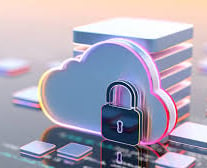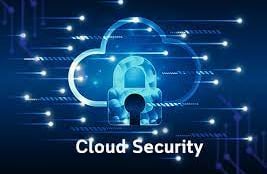Introduction
Storing data on the cloud offers immense benefits—scalability, accessibility, and flexibility—but it also opens doors for cyber threats. Hackers are constantly on the lookout for vulnerabilities in cloud services, making cloud environment security more essential than ever. Let’s dive into how businesses can protect their data while leveraging the cloud.
Abstract
Overview
Cloud security involves implementing a set of policies, technologies, and controls to protect data, applications, and services hosted in the cloud. This includes securing user access, encrypting data, monitoring activity, and addressing potential vulnerabilities.
Cloud environments have become the backbone of modern businesses, but with great storage comes great responsibility. As more organizations move their data to platforms like AWS, Google Cloud, and Microsoft Azure, securing these cloud environments is crucial. In this blog, we’ll explore the best practices for cloud security and how you can safeguard your data in the cloud.


[Disclaimer: This blog post is for informational purposes only and should not be construed as legal or financial advice. Organizations should consult with legal counsel and regulatory authorities to ensure compliance with reporting requirements.]
Mandatory
Cloud service providers have specific security protocols, but businesses must also enforce internal practices to complement these measures. Regular audits, vulnerability assessments, and stringent access controls are mandatory for a secure cloud infrastructure.
Applicability
Cloud environment security applies to all organizations leveraging cloud storage and services, especially those in industries dealing with sensitive data, such as finance, healthcare, and retail.
Regulatory or Company Interest?
Many regulations, such as GDPR and HIPAA, mandate strong cloud security. Companies must comply to avoid hefty fines and reputational damage.
Key Guidelines
Encrypt data at rest and in transit.
Implement multi-factor authentication (MFA) for user access.
Conduct regular security audits and penetration tests.
Monitor cloud environments for abnormal behavior and threats.


Key Implications
Failing to secure cloud environments can result in data breaches, loss of intellectual property, and financial penalties. It’s crucial for businesses to continuously assess and improve cloud security measures.
Countries with Adoption or Influence
Countries with strong digital infrastructure, such as the U.S., Germany, and the U.K., lead cloud security practices. Regulatory frameworks in these regions influence global cloud security standards.
International Frameworks Influenced
The NIST Cybersecurity Framework and ISO 27001 offer guidelines for securing cloud environments and ensuring compliance with international standards.
Regional and Industry-Specific Frameworks
Industries like healthcare and finance require adherence to specific frameworks like HIPAA and PCI DSS to maintain cloud security standards.
Secure Your Digital Identity with SecureKnots
Contact us to learn more about our cybersecurity services and ensure your organization meets cybersecurity requirements.


Conclusion
Cloud security is an ongoing process, and businesses must remain vigilant to evolving threats. Adopting a layered security approach is essential to mitigate risks and protect valuable data in the cloud.
How SecureKnots Can Help
At SecureKnots, we specialize in helping businesses navigate the complexities of cloud security. Our services, such as VAPT (Vulnerability Assessment and Penetration Testing), can identify weaknesses in cloud infrastructures, while our security awareness training can educate employees on best practices. Our ransomware attack simulation and phishing testing services ensure that your employees and systems are prepared for potential threats, keeping your cloud environment secure from all angles. Additionally, our internal and external audits provide an extra layer of assurance that your cloud security policies and controls are robust and compliant.
This blog focuses on the importance of securing employee access to internal systems while showcasing how SecureKnots can help organizations strengthen their access controls. It is informative and engaging, highlighting the significance of Cloud Environment Security Let me know if you need further adjustments!
Thank you for your attention! If you have any inquiries about cybersecurity requirements or need expert guidance, please don't hesitate to contact SecureKnots.
This should wrap up the blog and fulfill the promise made in the previous one!
Cloud Environment Security
With more businesses storing data on the cloud, the risk of attacks on these systems has grown. Cloud environment security ensures that data stored on platforms like Amazon Web Services (AWS), Google Cloud, or Microsoft Azure stays safe. Without strong protection, your data could be exposed to hackers who target vulnerabilities in cloud services.
WITH OUR SHORT BLOGS
STAY UP TO DATE
Copy Rights @ 2023 SecureKnots. All Rights Reserved.
CONTACT US
Contact@Secureknots.com
USA
+1-302-601-2346
+1-302-608-6708
INDIA
080-31658865
GET IN TOUCH
